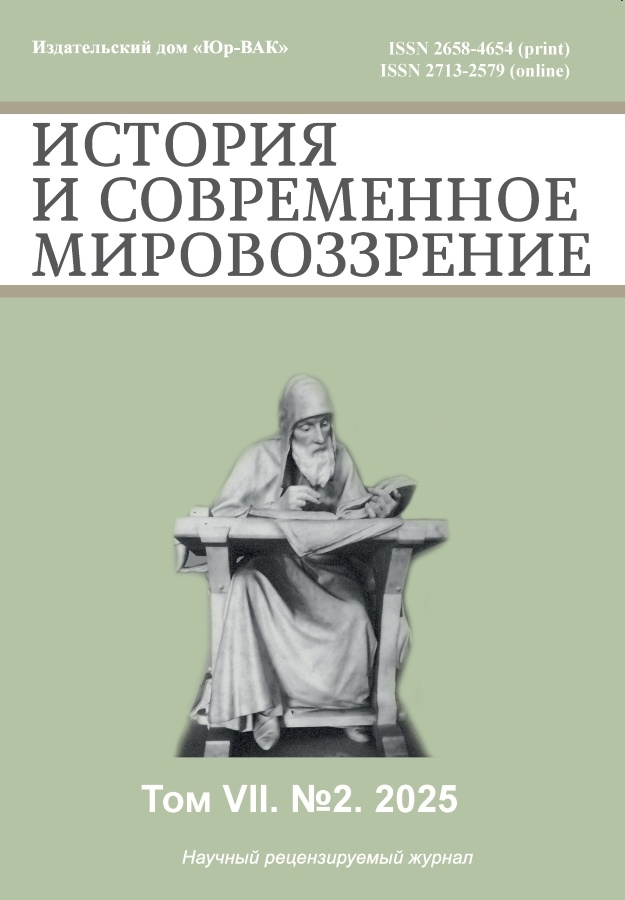Полис феаков в «Одиссее» Гомера: историческая реальность или поэтическая фантазия?
- Авторы: Лаптева М.Ю.1
-
Учреждения:
- Российский государственный педагогический университет им. А.И. Герцена
- Выпуск: Том 7, № 2 (2025)
- Страницы: 89-94
- Раздел: ДИСКУССИОННЫЕ ПРОБЛЕМЫ ВСЕОБЩЕЙ ИСТОРИИ И МЕЖДУНАРОДНЫХ ОТНОШЕНИЙ
- URL: https://journals.eco-vector.com/2658-4654/article/view/688822
- DOI: https://doi.org/10.33693/2658-4654-2025-7-2-89-94
- EDN: https://elibrary.ru/OQLMLJ
- ID: 688822
Цитировать
Полный текст
Аннотация
Цель исследования. В статье рассматривается один из аспектов важной антиковедческой проблемы: возможный хронологический и исторический контекст поэтических картин и образов гомеровской «Одиссеи». Цель статьи — выявление исторических реалий, лежащих в основе рассказа Гомера об идеальном обществе и государстве феаков, народа, оказавшего гостеприимство Одиссею и вернувшего его в родную Итаку. Автор анализирует свидетельства античных авторов о времени и месте жизни Гомера, сравнения, в которых отражены личные ионийские впечатления Гомера, сопоставляет описание Схерии, государства феаков, с данными археологических исследований ионийского поселения Смирна и ассирийских дворцовых комплексов, находя доказательства принадлежности поэта к миру ионийских рождающихся полисов, связанных политическими и торговыми отношениями с ближневосточными государствами. Выводы. На основе проведенного исследования автор приходит к выводу, что местоположение Схерии, её земельные порядки, фортификационные сооружения и дворцовый комплекс царя Алкиноя представляют собой поэтический сплав, в котором отразился реальный греческий мир гомеровской Ионии, а также рассказы греческих торговцев и путешественников о поражающих воображение дворцах и садах ассирийских царей.
Полный текст
Об авторах
Марина Юрьевна Лаптева
Российский государственный педагогический университет им. А.И. Герцена
Автор, ответственный за переписку.
Email: mlapteva1@yandex.ru
ORCID iD: 0000-0003-2635-2111
SPIN-код: 5893-2370
доктор исторических наук, доцент, доцент кафедры всеобщей истории
Россия, г. Санкт-ПетербургСписок литературы
- Андреев Ю.В. Раннегреческий полис (гомеровский период) // Раннегреческий полис (гомеровский период). Избранные статьи. СПб., 2003. С. 25–200.
- Видаль-Накэ П. Черный охотник / Перевод с французского А.И. Иванчика, Ю.Н. Литвиненко, Е.В. Ляпустиной. М., 2001. 419 с.
- Гиндин Л.А., Цымбурский В.Л. Гомер и история Восточного Средиземноморья. М., 1996. 328 с.
- Земцова Е.Е. Остров как образ сакрального: пространственно-темпоральные особенности античной утопии // Сакральный мир островных сообществ бронзового и железного веков. Ярославль, 2023. С. 14–31.
- Лаптева М.Ю. У истоков древнегреческой цивилизации: Иония XI–VI вв. до н.э. СПб., 2009. 512 с.
- Лосев А.Ф. Гомер. 2 изд. М., 1996. 400 с.
- Молчанов А.А. Социальные структуры и общественные отношения в Греции II тысячелетия до н. э. (Проблемы источниковедения миноистики и микенологии). М., 2000. 315 с.
- Подосинов A. В. Куда плавал Одиссей? О географических представлениях греков архаической эпохи. М., 2015. 200 с.
- Суриков И.Е. Мифы и святыни острова феаков // Сакральный мир островных сообществ бронзового и железного веков. Ярославль, 2023. С. 77–86.
- Туманс Х. Рождение Афины. Афинский путь к демократии: от Гомера до Перикла (VIII–V вв. до н. э.). СПб., 2002. 544 с.
- Фролов Э.Д. Факел Прометея. Очерки античной общественной мысли. 2-е изд. Л., 1991. 440 с.
- Фролов Э.Д. Рождение греческого полиса. 2-е изд. СПб., 2004. 266 с.
- Яйленко В.П. Архаическая Греция и Ближний Восток. М., 1990. 271 с.
Дополнительные файлы









